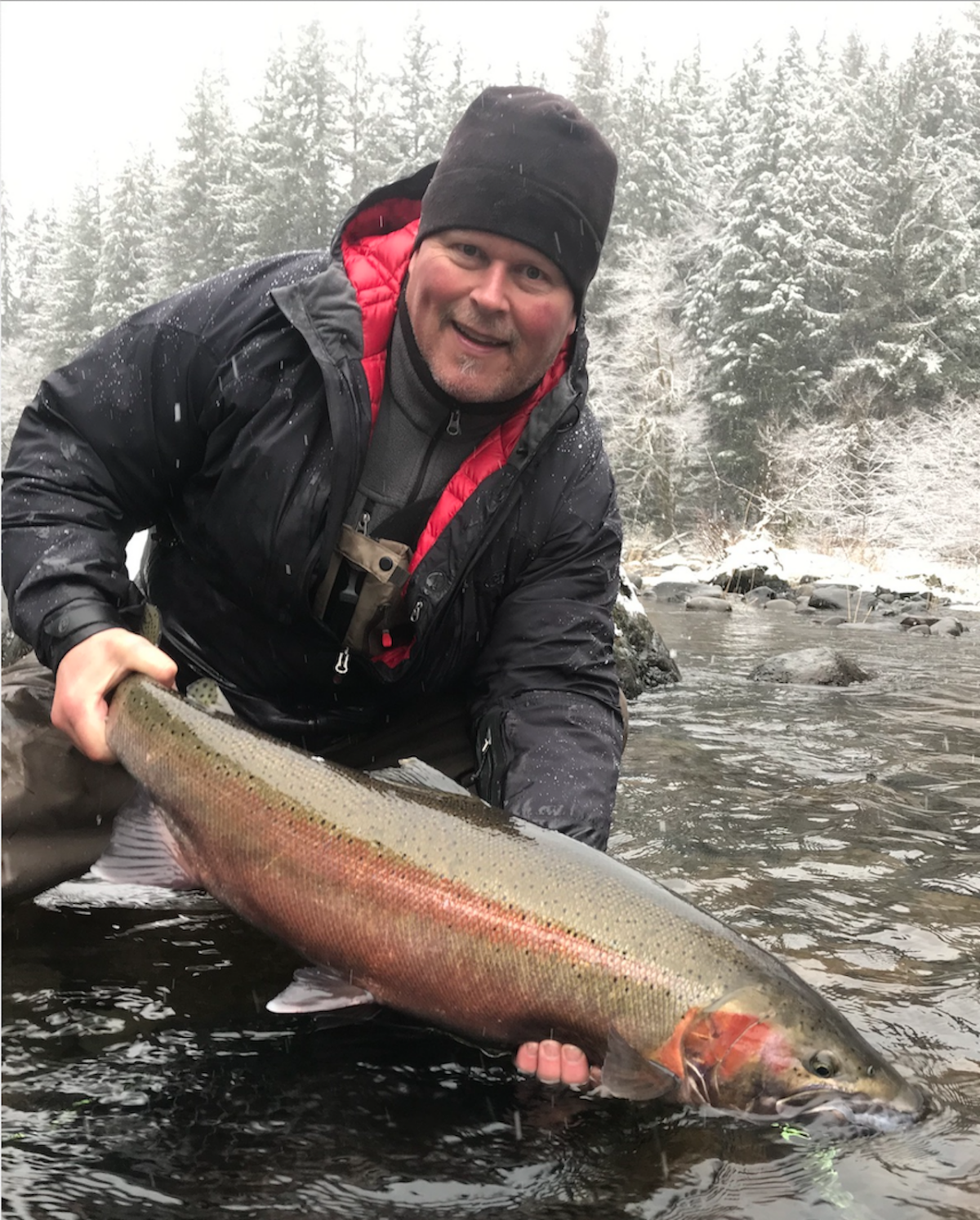
Washington Coast Steelhead Fishery Meeting Tonight
Planning for the upcoming Washington Coast winter steelhead fishery kicks off this evening during a WDFW webinar in which state managers will ask anglers and others for fishing proposals as well as reveal the 2023-24 run forecast and review last season.

It’s a now annual process that essentially began in late 2020 in response to poor predictions and a record-low return that same winter, and includes a series of town halls with the public and private meetings with tribal comanagers before a final regulations package is announced in early December.
It remains to be seen how restrictive this season’s fishery will end up – 2020-21’s blanket bank-fishing-only rule has been relaxed on some waters, but others have also been closed, acing anglers out of access to plentiful hatchery steelhead though last year at least there was a slim crack at tapping into some late-arriving coho – but in a potential foreshadowing, WDFW’s press release on the meeting does put “coastal steelhead conservation” before “offering meaningful fishing opportunities where we can.”
Tonight’s virtual town hall comes with a fair number of related balls in the air.
Looming in the background is a National Marine Fisheries Service finding in February that an Endangered Species Act listing “may be warranted” for Olympic Peninsula steelhead – one of the coast’s key and strongest stocks.
The next population to the south, Chehalis Basin steelhead, has been far worse off in recent years, and one issue there and elsewhere on the coast has been WDFW’s limited ability to monitor steelhead fisheries and runs, which has impacted angling opportunities. This past legislative session the agency pinned hopes on getting a $5.9 million budget proviso to boost that ability, but it withered on the vine. While some anglers have been puzzled why department fishery managers are funding cutthroat and Puget Sound squid surveys instead of ones focusing on coastal steelhead, WDFW is requesting a $3.2 million package toward that end for possible inclusion in the 2024 supplemental budget.
“Funding of this proposal will have direct benefits to anglers, as managers are able to increase precision around angler impacts and manage opportunities based on information collected during the fishing season. This could expand fishing opportunities when inseason information suggests higher abundances, or reduce opportunities when stocks are trending lower than preseason forecasts. The information collected also fills data gaps that have been identified by Tribal Comanagers and federal partners in relation to fisheries impacts on nontarget species,” WDFW’s pitch to state budget writers reads.
And this Friday, the Fish and Wildlife Commission is expected to make a decision on a petition to further restrict trout fishing on streams with steelhead. Rainbows are essentially the juvenile or nonseagoing form of winter- and summer-runs and the Wild Steelhead Coalition is calling for switching to year-round catch-and-release and selective-gear rules on “all watersheds with wild steelhead,” according to a WDFW writeup, as well as closing the trout fishery on portions of streams that have been designated as gene banks for Oncorhynchus mykiss and where native returns are below escapement goals.
“Conserving resident trout, particularly in watersheds with wild steelhead runs, produces genetic integrity that, coupled with preserved or recovered river habitats, will go a long way to ensure viable steelhead populations, particularly in the face of a combination of stresses that include those from inevitable climate change,” WSC states.
WDFW is recommending the commission deny the petition, but given a statewide management plan created in 1984 and varying regulations for wild trout in streams put in place since then, suggests that the agency be directed “to develop a native resident trout harvest management policy to guide staff for future rule-making.”
Following tonight’s coastal steelhead meeting, WDFW will meet with coastal tribes in mid-November to “finalize management plans that guide the approach to the 2023-2024 coastal steelhead season,” report back to anglers on November 27 to talk about “the public’s fishery proposals and analysis, discuss co-manager plan for fisheries, and collect additional feedback,” followed by an early December decision on the season.
See this page for a timeline and this one for more information.
